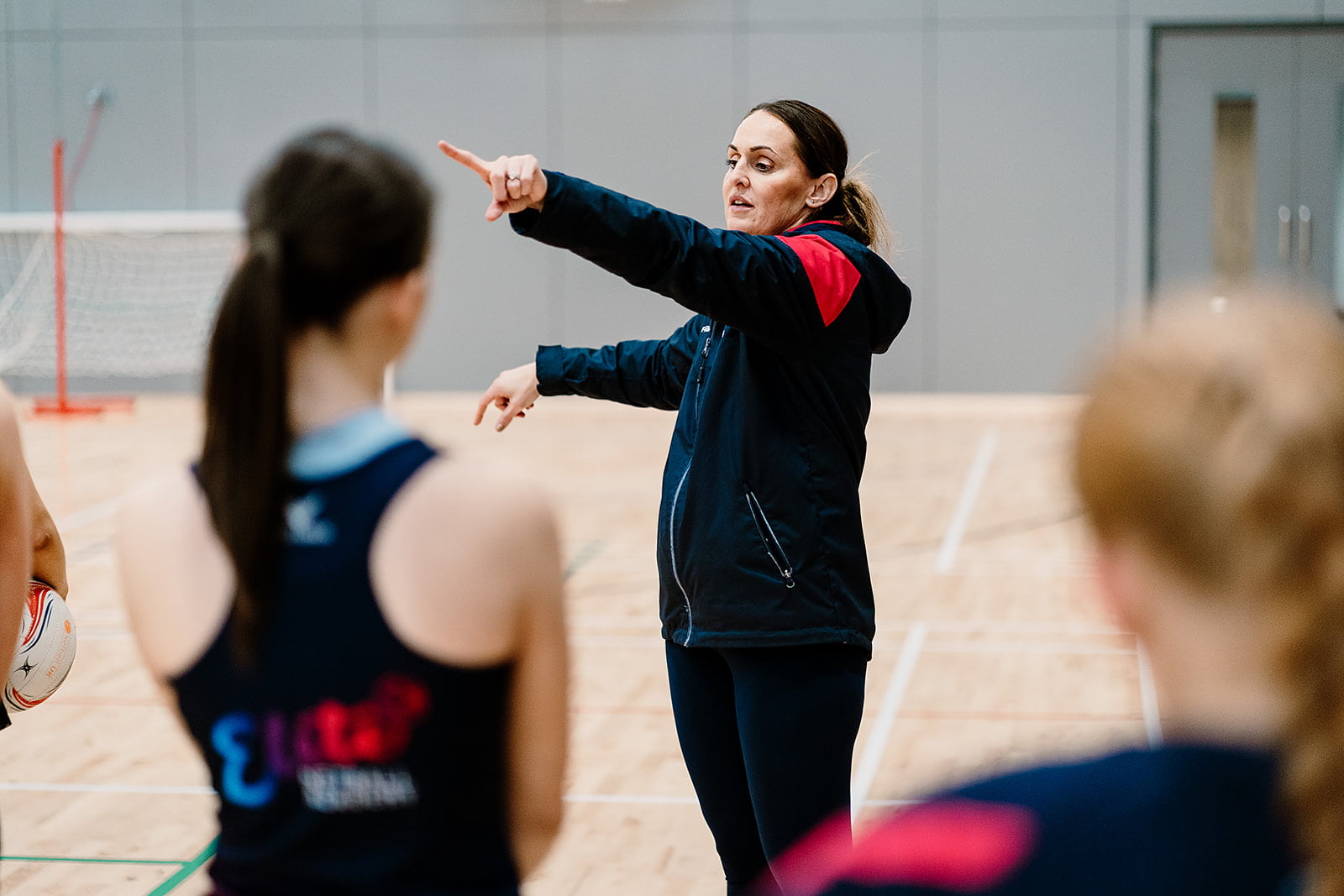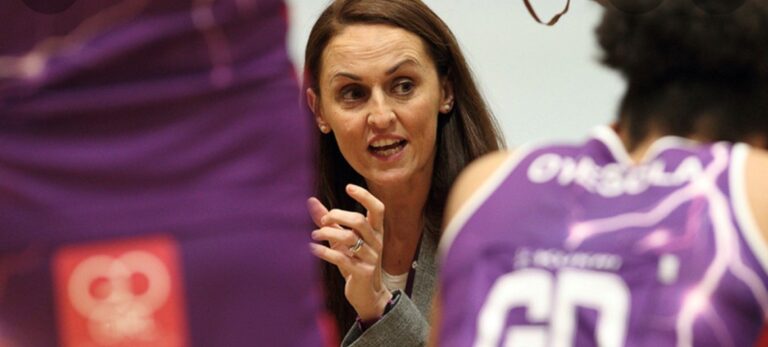Attack Drills in Netball
Attack in netball involves players keeping possession and passing the ball through the court to goal.
All positions play a crucial role in a team’s attacking ability. Pace and control are two crucial elements of good attacking play in netball. Frustrating the opposition with ball retention, technical execution and good decision-making under pressure also play a part.
Quick links attack drills in netball:
- Netball attacking tactics
- How you can improve your netball attack
- Why all players on the court are attackers
- How to lose your defender in netball
- Feeding the circle – principles of where to be and how to adjust
- How to improve your team’s attacking netball
Written by Nat Panagarry:
- 3 x NSL Grand Final Winner
- NSL Captain
- NWC Bronze medalist
- Position – Centre
Before we get into how to improve your netball attack, for teams and players, here are some fundamental skills I like to instil early on when I’m coaching:
Teams:
- Possession and ball retention – feel comfortable in possession and under pressure
- Two options on every ball. A forward option and a lateral/backup option as a minimum
- Playing through and round opposition, opening up space in between and beyond opponents.
Players:
- Move with purpose and speed. Have awareness to clear out and create space for others
- Challenge yourself to be creative and improvise on and off the ball
- Exploit space on the court, be brave
- In decision making, turn fully and site forward options
Netball attacking tactics
As we’ve already mentioned, netball attacking tactics, in their simplest form, revolve around keeping possession and passing the ball through court to goal. There are a few key ingredients teams need to ensure attacking success.
Width and balance on the court – is your team using the whole court? This doesn’t mean just firing a long ball across the court, but more are your players using the court to their advantage and using the space to lose their defender?
Two options on every pass is (and has always been) a must-have for me. Ideally, two forward options, but one forward and one lateral/backup is great too. Coach your players to always be ready to support, this includes the GK coming up to the line and being there in case the defence is struggling to bring it down the court.
Centre pass attack set plays cannot be ignored. One player over the line at a time with the attack leading from the front. It’s an awesome opportunity for set play and for your players to link up to create an easy passage to the goal. I look at this in more detail in my centre pass attack blog here.
A wide set-up splits the defenders and when executed well can pull teams apart. Make sure your players are still driving onto the ball from wide positions and not just hugging the sideline expecting a pass.
Side stacks and screens are great ways of confusing defenders and not showing your hand too early. The whole team needs to be on board with this style of attacking play so the feeders know what is happening.
Is your shooting circle working as a unit with one offering a front position and one offering to post? Again keeping your attacking players apart in the circle will split the circle defenders and create space.
How can you improve your attacking skills?
Improving attacking skills takes time. Time as an individual to build the skills needed to attack effectively and time together as a team to build attacking connections. Here are six drill topics to look at to build attacking skills:
Passing skills and drills will improve your ball control and accuracy of pass (practice this under pressure and fatigue too).
Release points and turning fully/quickly to see options through the court.
Footwork pattern drills are key and no matter how experienced your players are footwork drills should always feature in training sessions. This is something we can always work on as players.
Change of direction – knowing when and where to use it is key for your players plus how it can be used to access different spaces. A good change of direction is a hard drive off the outside foot into the space.
Explosive runs onto the ball to escape opponents and take a ball strongly and cleanly. Want to become more powerful? Read our blog on plyometrics for netballers.
Ball retention, being comfortable in possession and decision-making under fatigue often get overlooked but they are important to improve your attacking skills in netball. We’ve got a great session on decision-making in attack available on our Member’s Area. It’s accompanied by a PDF resource too so your players can master the drills shown in the video.

Why all players on a netball court are attackers
All seven positions play a crucial role in a team’s attacking play. Every player must develop to be aggressive with their attacking movement and availability. For centre pass attacks, 4 players can receive the ball and defensive backline passes turn defence players into attackers.
Defenders are often used to bring the ball to the third line and if we want teams to play with control and game smarts, the whole team must be utilised. Encourage defenders to stay switched on and available for their team on the line.
How to Lose your defender in netball
The ability to lose a defender takes time and skill. Practice practice practice is the best recommendation. Mastering the six areas mentioned above in how to improve your attacking skills will help you lose defenders.
Four key skills an attacker needs to lose a defender in netball:
- Change of speed
- Rolls
- Reverse turns
- Strong, aggressive drives and takes
If you can add these elements to your game you’ll be a hard player for any defender to mark.
Feeding the circle. Principles of where to be & how to adjust
A hard skill to master for an attacking player is feeding the circle. Weight of pass and finding the perfect release point can take years to achieve. To make your life easier as an attacker, always think circle edge. If you can get on the circle edge you’re as close to your circle attackers as you can be and there’s no space for a defender to do a 3 ft mark.
Positioning around the edge is important. Attackers (WA and C) at ten and two on the circle edge is, on paper, the perfect feeding zone. Being in these positions gives your shooters room to front cut, run the back line or pop. Keep repositioning to get access to the circle edge if you need to and turn to use your backup players on the line if no options are coming forward.
Watch and communicate with the player you are working with. C and WA can create triangle opportunities to open the shooters and create better feeding lines into the circle.
This is a great session we filmed recently on attacking connections.

It focuses on building connections between players and exploring options through the court.
Release points are important when feeding the circle. If your feeds are falling short and you need more height look at an overhead or shoulder pass to create lift.
If you have reactive and rangey defenders in the circle, use fakes to move the defenders and open up space for your shooters.
How to improve your team’s attacking netball – Principles & Mindset.
Instilling attacking principles and improving your team’s mindset will improve your team’s attacking netball. Create a safe learning environment where players can openly challenge one another and themselves. Let them ask questions and make mistakes. Make sure you’re offering positive as well as constructive feedback.
Be open with them about areas that need improving and to demonstrate what you mean, walk and talk through any areas they might be struggling with before you launch straight into drills or on-court scenarios. If you can offer visuals/drawings of setups too.
Setting goals and team challenges during training will replicate game/pressure scenarios to help your team get comfortable in possession and decision-making under pressure.
I always like it when a coach is clear on the expected outcome too, and they’re clear with players about their roles in setups. Attack setups often fall down because players don’t know what their next move should be so always ensure there’s a second, third and fourth phase if needed. Walk through these phases and repeat again and again until everyone is clear. This takes as long as it needs to take.
I hope you’ve enjoyed this blog on attack drills in netball
Nat Panagarry
About the author:
Nat Panagarry is a Superleague player and captain and has won (to date) 3 x NSL Grand Finals with her team.
Nat is also a Performance Coach Consultant at Elite Netball Academy and works with our players in weekly academy classes and at camps to improve performance on and off the court.










